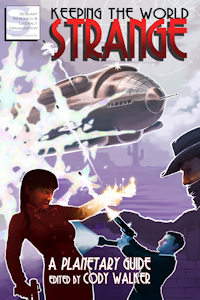Stormwatch began during the launch of Image Comics in 1993. It was thus a great success; all of Image Comics’ publications flew off the shelves in that early period when the excitement of a third mainstream American comics publishing company seemed an utopian dream. Image Comics had been founded by a group that included Marvel Comics’s most prominent artists (including Todd McFarlane and Jim Lee), and it was trumpeted as a movement toward creator ownership since each of the Image founders owned the books on which they worked. Marvel Comics had long had as its policy that its characters and not its creators were the genesis of its sales, and so Image Comics felt revolutionary at the time. In retrospect, much of Image Comics’ early years had little quality to recommend it. The fact that the Image founders had came from Marvel and not DC could be felt in their stories, which were even worse at Image, where illustrators frequently wrote or co-wrote as well as illustrated, than they had been at Marvel, which had a tradition going back to Stan Lee’s days in the 1960s for subordinating the story to the artwork. Moreover, as other writers and artists were brought in to work on Image titles, often because the Image founders could not keep to regular schedules but also because the founders launched spin-off titles, Image Comics shifted increasingly towards work-for-hire (ironically, a similar situation to the one that the founders had protested at Marvel Comics). Image Comics became, in effect, a small number of feifdoms, most of which operated as miniature versions of Marvel Comics. The quality of the titles tended to improve as work was farmed out; real writers began working at Image under contract, and the art, while it lacked the astounding popularity of the art of the Image founders, often told stories better (presumably, these new artists tended to subordinate their art to the story more than the stars who had founded the company on their exaggerated artistic styles).
Stormwatch was published by Image Comics but was produced by Jim Lee’s WildStorm Studios, his independent arm of the Image octopus / conglomerate / umbrella. In fact, WildC.A.T.s had been Jim Lee’s flagship book; Stormwatch was the first additional title of his WildStorm Studios. Stormwatch fit the Image pattern. The quality of its early years was not great, and the title was farmed out to various work-for-hire creators.
After Stormwatch #9 had been published, the various studios of Image Comics implimented their collective “Images of Tomorrow” gimmick — for which the various studios produced issues numbered #25 for various titles, jumping forward in numbering by a year or more for many books. As such, Stormwatch #25 was published after #9 and followed by #10. The idea was that the participating titles would move toward the events of their #25 so that #24 would logically flow into #25 and #25 would logically flow into #26, the issue published after #24. The idea was more than a curiosity, however; it was a statement that Image was here to stay — at least for another year or two. With Image’s reputation for lateness, this became a great joke; people speculated how long it would take to reach #25 and how many titles would survive that long. As it turned out, things worked out fine.
Before long, writer Ron Marz (of Green Lantern fame) was brought in, and he continued for a time; he was, essentially, the only notable writer of the early Stormwatch period. Stormwatch #22 participated in the “WildStorm Rising” crossover that ran throughout WildStorm Studios’ titles. #35 and #36 participated in an even bigger WildStorm crossover entitled “Fire from Heaven.” With #37, the then-unknown Warren Ellis took over the writing of the title that he would define and eventually transform into The Authority.















































